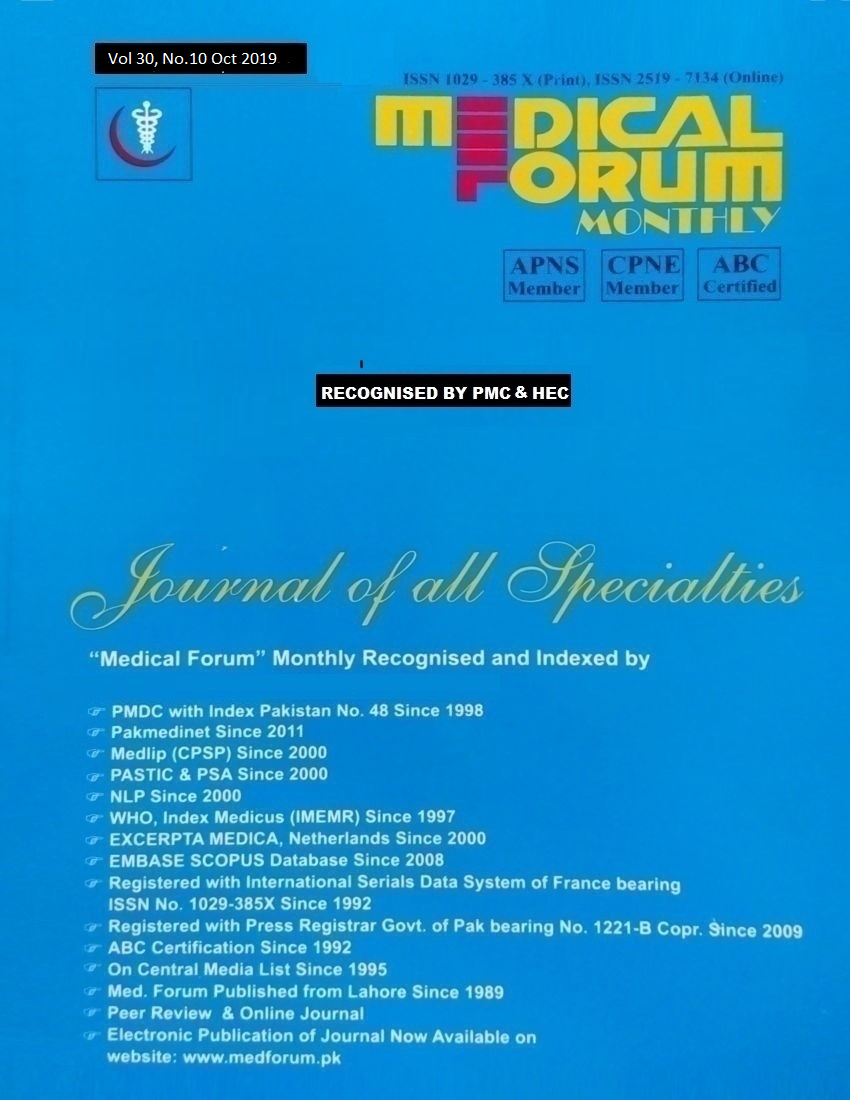
35. Assessment of Determinants Leading to Salmonella Resistance to Ciprofloxacin in Patients Presenting with Typhoid Fever
Muhammad Khalid1, Abdul Hannan1, Nizam Muhammad Darwesh2, Muhammad Haroon Shahid1, Rifayatyllah3 and Shabir Hussain1
ABSTRACT
Objective:To determine the frequency and common factors leading to ciprofloxacin resistance to salmonella among patients presenting with typhoid fever.
Study Design: Descriptive / Cross Sectional Study
Place and Duration of Study: This study was conducted at the Department of Medicine, Qazi Hussain Ahmad Medical Complex, Nowshera from 23-01-2018 to 22-07-2018.
Materials and Methods:Through a Descriptive Cross Sectional Study Design, a total of 195 patients with typhoid fever were selected in a consecutive manner from Medical Wards and tested for resistance of salmonella to ciprofloxacin and common risk factors leading to it such as prior use of ciprofloxacin and recurrent typhoid fever were also scrutinized.
Results:The mean age of patients was 29.4 ± 11.56 years with 63% male gender predominating the overall sample of typhoid fever. On disc diffusion (Kirby Beur) method salmonella resistance to ciprofloxacin was found in 72 (36.9%) of patients with 36-45 years of age group most commonly affected age group (47%) and male (72.2%) commonly affected gender. The distribution of common factors leading to salmonella resistance to ciprofloxacin are: 46 (63.9%) had history of prior use of ciprofloxacin and 26 (36.1%) had recurrent typhoid fever.
Conclusion: As in many other parts of the world, salmonella resistance to ciprofloxacin is also common in our local population and the most common factor responsible for it is prior use of ciprofloxacin. Key Words:Typhoid fever, ciprofloxacin, salmonella.
Citation of article: Khalid M, Hannan A, Darwesh NM, Shahid MH, Rifayatyllah, Hussain S. Assessment of Determinants Leading to Salmonella Resistance to Ciprofloxacin in Patients Presenting with Typhoid Fever.
Med Forum 2019;30(10):149-154.
